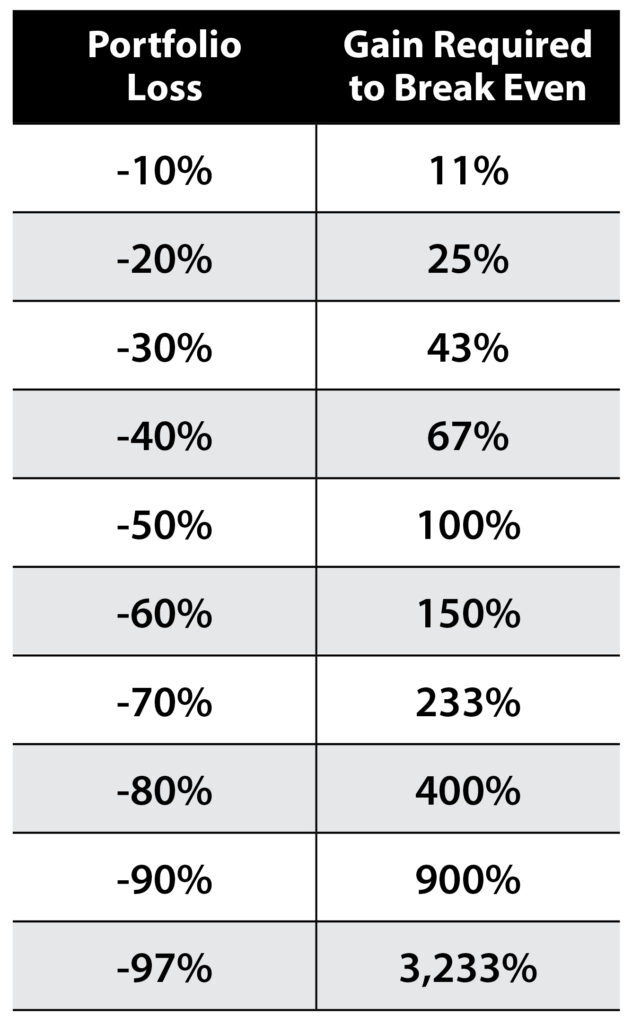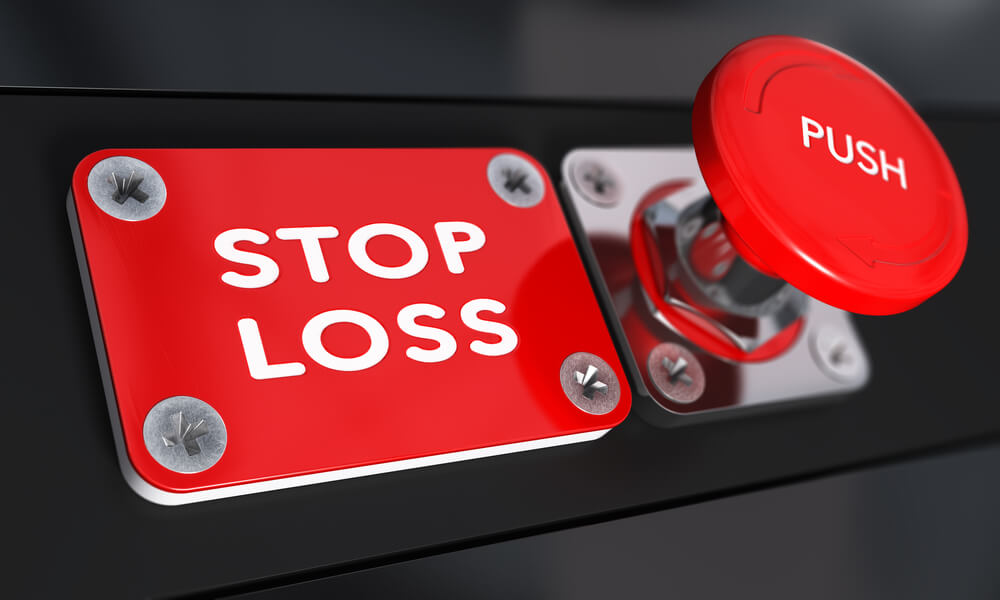“If it don’t go up, don’t buy it.”
That’s what comedian and newspaper columnist Will Rogers said when he figured out the stock market a century ago.
Alas, not every company is a winner. Some investments are going to bomb on you, and knowing when to take a loss on stocks is important.
Take a look at the chart below. As you can see, gains and losses are not equal. After taking a loss on stocks, you have to gain back more in percentage terms in order to break even.

If you lose 10% to 20% in a trade, it’s not that hard to recover. It only takes 11% to 25% to get back to where you started.
But if you lose 50%, you need 100% returns to get back to break even. Or if you lose 97% — as you easily could in a risky trade gone wrong — you’d need a ridiculous 3,233% on your next trade just to get back to zero.
I like to think I’m a decent investor. But I don’t have any 3,233% trades swirling around in my head.
Know When to Take a Loss on Stocks
OK, we’ve established why knowing when to take a loss on stocks is important. You don’t want to dig yourself into a hole you can’t trade your way out of.
But how, exactly, do you do it? Let’s go over two ways.
Position Sizing
Probably the single most important tool to keep your losses under control is position sizing. I could write for days about the “correct” way to size a position and never fully cover the topic.
But I can summarize it here in a few words:
- The riskier the position in your portfolio, the smaller it should be.
- The safer the position, the larger it should be.
It’s that simple.
Let’s say you put 1% of your net worth into a risky options play. If it blows up in your face, it’s not going to wreck your finances. But if you put half your net worth into it and it blows up … you just permanently reduced your net worth.
So always be smart about position sizing, and never overweight your position on a risky bet.
Stop-Loss Orders
A stop-loss is a rule to automatically sell a stock you own if its price drops below a certain point. For example, you could have a stop-loss in Apple Inc. (Nasdaq: AAPL) at $90. If the stock price falls below that price, you sell and walk away. You don’t hold out and hope for a recovery.
Brokerages and apps like Robinhood let you put a stop-loss sell order on all of your stocks. That way you don’t have to watch them closely if you don’t want to. Or maybe you are going on vacation or something.
Stop-losses are controversial. As a general rule, I’m a fan because they prevent small losses from snowballing into larger ones.
Of course, the downside is that you won’t get to participate in any recovery. Let’s say Apple drops to $350 before immediately turning around and soaring to $400. Well, you just missed all that upside.
The decision to use a stop-loss goes hand in hand with position sizing and knowing when to take a loss on stocks. If you keep your position sizes small, a stop-loss is far less important. A small position isn’t going to blow up your portfolio if it goes south.
But in a larger position, a stop-loss is a great idea. If a stock or fund makes up a large portion of your portfolio, you need to make sure you don’t take losses that you will never recover from.
As a general rule, you should set your stops at points that are just below a “normal” trading range for that particular stock. As a simple example, let’s say a stock trades between $10 and $25. You could set a stop-loss for $9 since that’s below the “normal” range.
That’s the essence of knowing when and how best to take a loss on stocks. You should look to sell when something has fundamentally changed and get out before it’s too late.
To safe profits,
Charles Sizemore, Co-Editor, Green Zone Fortunes
Charles Sizemore is the co-editor of Green Zone Fortunes and specializes in income and retirement topics. He is also a frequent guest on CNBC, Bloomberg and Fox Business.
Story updated on December 20, 2021.






